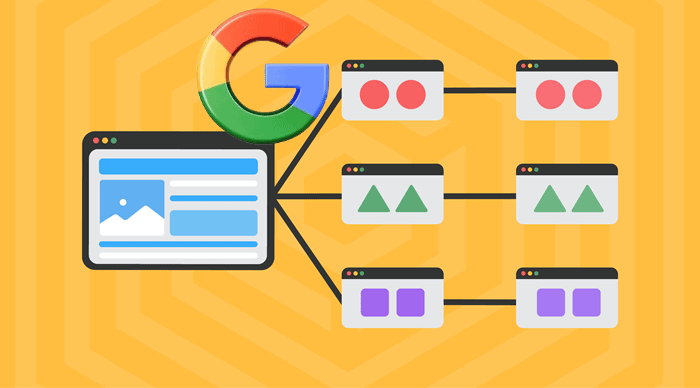Prioritizing effective communication with expertise and authority is paramount, and an excellent starting point involves structuring your content using a topic taxonomy. This approach ensures that your content is well-organized and has the optimal chance of achieving a high ranking.
What is a Taxonomy
A taxonomy serves as a systematic method for classifying, organizing, and naming entities based on common characteristics. While commonly used in scientific contexts for categorization, the term extends to various domains, including topics, making it a valuable concept to grasp for successful SEO implementation.
Topic Taxonomy in the world of content pertains to the systematic arrangement of information into various topics and subtopics. This method of content organization outlines the inherent subjects covered within a webpage. The primary aim of using a topic taxonomy is to establish a well-structured framework for creating a coherent document that maintains semantic relevance to a given subject.

This approach provides a high-level perspective on content, allowing one to see the overarching themes rather than getting lost in the details.
To construct a topic taxonomy, advanced technologies such as deep learning, neural networks, and RankBrain have played a crucial role in steering Google away from focusing solely on keywords and towards a better understanding of the topics present in content. Search queries are increasingly about topics that can be effectively categorized using this approach.
Beauty > Makeup > How-to
Similar to topics, webpages can be effectively categorized since they rarely focus on just one subject; there are typically various subtopics present. When contemplating a particular topic, it’s useful to consider its constituent parts. For instance, if the webpage revolves around a clothing product, the subtopics may include: Size, Material, Fit, Fabric, Care, Description and Reviews.
These subtopics represent the elements that consumers anticipate encountering when browsing a clothing-related webpage.
On the other hand, if the webpage is centered around instructing how to build links, the subtopics might involve Research, Analysis, Outreach, Templates, and Subject Lines.
In both cases, understanding and organizing subtopics contribute to a more comprehensive and user-friendly webpage.
Google Recognizes Topics
John Mueller from Google has previously commented that headings serve the purpose of conveying the essence of what the topic entails.
Mueller said:
“And when it comes to text on a page, a heading is a really strong signal telling us this part of the page is about this topic.
…whether you put that into an H1 tag or an H2 tag or H5 or whatever, that doesn’t matter so much.
But rather kind of this general signal that you give us that says… this part of the page is about this topic.
And this other part of the page is maybe about a different topic.”
In a seminar held in 2021, Google’s Martin Splitt discussed this procedure, introducing Google’s internal concept of webpage topics known as the “Centerpiece Annotation” of a webpage.
Martin elaborates:
“That’s just us analyzing the content and, I don’t know what we have publicly said about this, but I think I brought it up in one of the podcasts episodes.
So I can probably say that we have a thing called the Centerpiece Annotation, for instance, and there’s a few other annotations that we have where we look at the semantic content, as well as potentially the layout tree.
But fundamentally we can read that from the content structure in HTML already and figure out so “Oh! This looks like from all the natural language processing that we did on this entire text content here that we got, it looks like this is primarily about topic A…”
In the mentioned statement, Martin emphasizes the existence of additional annotations linked to:
- The semantic content
- The layout tree
Crucially, Martin Splitt underscores that Google’s objective is to pinpoint the main topic of a webpage. Consequently, your task involves delineating the primary topic of the webpage along with the pertinent subtopics.
Prioritize Precision over Completeness.
Finally, refrain from the error of aiming for comprehensiveness. Offering a direct answer is consistently optimal, as conciseness provides the advantages of clarity and time-saving. When individuals seek answers, they prefer a response that is fast and easy to comprehend, whether on a consumer product page or a review site. Avoid dwelling on information that is not directly pertinent; instead, be succinct.
Google places a premium on precision and speed. This is exemplified by their choice of the term “Hummingbird” for the 2013 update, reflecting a core algorithm rewrite that enhanced speed and precision. Subsequent updates have also emphasized precision.
Therefore, it is crucial to prioritize precision, not merely because Google values it, but because it aligns with user preferences – a focal point for Google. Adhering to a taxonomy of topics aids in maintaining precision and completeness without veering into excessive content or straying off-topic.
Would you like to read more about “Google on SEO and Topics Taxonomy” related articles? If so, we invite you to take a look at our other tech topics before you leave!
Use our Internet marketing service to help you rank on the first page of SERP.










